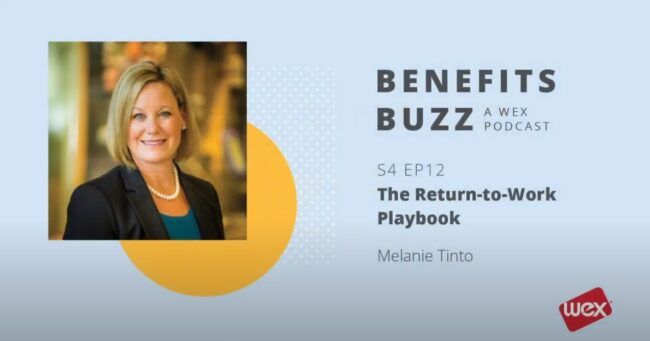Stay connected
Subscribe to our health benefits blog and follow us on social media to receive all our health benefits industry insights.

Over half of U.S. workers said last year that remote works for their industry. However, the model you choose for what your office will look like post-pandemic can have an impact on productivity, culture, and employee engagement. If you work in human resources, you’re likely weighing those three factors, and many others, in deciding what your framework is for the post-pandemic office.
WEX Chief Human Resources Officer Melanie Tinto joined us on Benefits to discuss her considerations when mapping out the future “ways of working” at WEX. Watch the full episode below, or keep reading as Tinto breaks down the three potential workplace employee scenarios and what has helped her team make decisions when looking ahead.
There are three common “ways of working” in looking to our workplace post-pandemic:
Tinto said on Benefits that WEX is considering all three of the above options.
“Companies really need to think about not just working from home, but the continued engagement of their employees and what that really looks like,” Tinto said. “And how individuals and employees have pride in the organization they work in.”
Collecting feedback from your employees and your supervisors is an important step in determining what’s right for your business. Tinto named a few ways that have helped influence decisions her team is making, including:
“There’s something to be said for in-person onboarding,” Tinto said. “There’s an opportunity to make connections (in-person) with other people. … For others, it’s going to be a lot of optionality in, ‘What’s the type of culture they want to work in? What’s the environment? How does choice play into that?’ I do think the talent is really in the driver’s seat in terms of that selection process.”
Watch the full episode or subscribe to our podcast today!
The information in this blog post is for educational purposes only. It is not legal or tax advice. For legal or tax advice, you should consult your own counsel.
Subscribe to our health benefits blog and follow us on social media to receive all our health benefits industry insights.